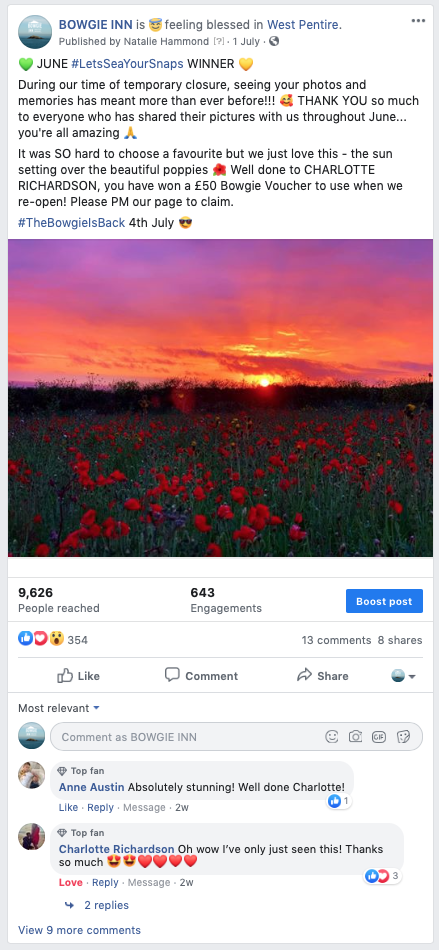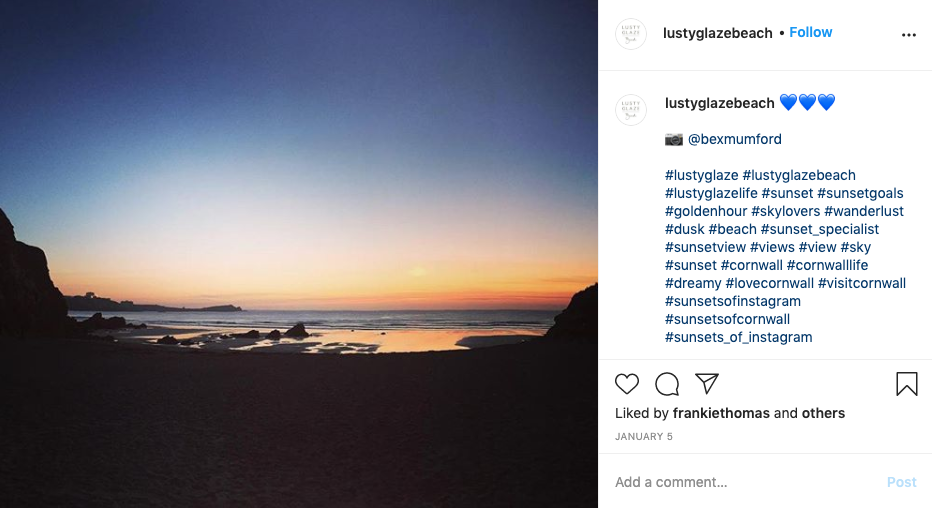Ever wonder why you aren’t getting many likes on that Facebook post you spent hours writing, or why your follower numbers on Instagram have plateaued?
It’s true that there are pesky algorithms at play on social media platforms, but don’t panic! There are things you can control to help boost your presence online – and we’re here to tell you some of them.
Social media is increasingly becoming less about follower numbers (although that helps) and more about engagement – which means posting extremely relevant content that your target audience connects with. There’s no silver bullet and it does require a level of dedication, but here are a few tips and hacks to help get your engagement and follower stats firing again.
1. Pre-prepped hashtags
You’re allowed 30 hashtags per post on Instagram, so thinking of all 30 on the spot can be a bit of a time sponge. Our top tip is to save a few bundles of popular hashtags that focus on different areas of your business and then just copy and paste them when you need! It’ll save you a world of pain later. There’s a lot of talk about whether you should use all of your hashtag allowance of if it’ll make you look too needy. Our advice? They let you have 30 for a reason! If you’d rather not put the hashtags next to your caption then add them into the comments once you’ve put the post live (it works exactly the same way).
Picking the right filter also sounds like a faff but it’s well worth it to accentuate those colours – just keep your filter choice consistent so it becomes synonymous with your brand. You can also adjust the settings on your Instagram account so that your favourite filters pop up first when you’re in editor mode. Another time saver!
2. Choose the right visuals
We cannot express enough how important visuals are on social. Us humans only remember 10% of what we read, compared to 30% of what we see (photos) and 50% of what we see and hear (videos). Let’s be honest, social media users as a generation are pretty lazy when it comes to consuming content; they want quick, easy-to-take-in information – but a wow-factor photo is going to leave a mark on that brain.
3. Don’t make people ‘See More’
Keep it succinct because if people have to hit ‘See More’ to read everything you want them to read, they might not. If you do end up dropping below that line, be sure to get the most important information across first and make it easy for the reader to scan everything else. In our opinion though, the shorter the better!
4. Talk to your audience
We live by the ‘who, what and why?’ methodology; who are you talking to, what do you want them to feel/think/do, and why should they? If you follow that line of thought with every post you’ll start fostering more of a community vibe, and being authentic and engaged with your online community is key in terms of gaining more engagement.

5. Commercial vs. non-commercial content ratio
If your social channels are pushing too many sales messages, you’re likely to see less interaction. Let’s put it in real life terms; you’re walking through a fruit market and one of the stall holders spots you. They shout after you, you politely smile and carry on walking – but then they start following you, asking you over and over again to buy their bananas. You start to pick up speed a little to get away from them, but they break into a gentle jog and actually get in front of you, still insisting you buy their stuff, eventually saying, “well, why won’t you?” If you were online you’d be reaching for that unsubscribe button…
It’s too full on and enough to drive you bananas (pun intended), so don’t fall into the trap of doing it online. Social media is just that; it’s social. People want real, authentic interactions – they want to feel like they’re appreciated and not just another walking £10 note. As a creative agency, we work on a 2:1 ratio where it’s all about the jab, jab, punch! Two non-commercial messages to every commercial message tends to strike a pretty decent balance between that human connection and straight up sales, keeping your channels genuinely interesting as well as revenue generating.
6. Different platforms need different TLC
One size doesn’t fit all. We know how tempting is to write one post and click ‘Share To All,’ but if you put a little care and craft into your messaging on each platform you’ll really start to stand out to your different audiences. Here’s a little overview of each and the type of tailoring they need to help maximise your reach;
Facebook – like a communal notice board. Great for competitions due its ‘share’ functionality and longer form posts to get key information to your customers.
Instagram – like a glossy magazine. All about the visuals and quirky captions. Ideal for giving your audience the ‘I wants.’
LinkedIn – like a broadsheet newspaper. A slightly more formal platform to celebrate your business updates and successes with other business connections.
Twitter – like post it notes. Great to add your viewpoint to a trending topic and its 280 character limitation means you have to keep it succinct by nature.
TikTok – like the new Vine video platform. Almost half of its users are aged between 16-24 (aka the majority still have to ask the bill payer’s permission to vote on the X Factor), so the jury’s still out on if it’s worthwhile for brands and businesses to have a presence as yet. We’ll keep you posted…
7. The value of Influencers and #InstaGoals
Influencers; love them or hate them, they could have a role to play in your marketing. If you find the right ones who have loyal, devoted fan bases, literally one shout out to their followers and you could see instant ROI start rolling in. Be wary though – we’d recommend trying to form a relationship or better still meeting the Influencer in person before signing yourself up to any commitments; there are some rogue ones out there.
There are also lots of Instagram accounts out there that re-share content from other accounts when you use their hashtag (usually found in their bio). It’s worth taking some time to find a few that could help boost your profile, so you can use them when your post is relevant to a wider audience.
 8. Tweet along with live topics and events
8. Tweet along with live topics and events
Without a doubt, Twitter is the strongest form of communication in terms of connecting to things that are happening in real time. You can easily tap into trending days, live events and even popular TV shows to increase brand visibility. When you use a hashtag that’s trending, it will show up as part of the conversation and is more likely to be seen.
Whilst we’re on the subject of Twitter, if you’re Tweeting back to an account but want it to be seen by everyone on the platform, put a full stop or small punctuation mark before their @ handle. This will make it visible to all users rather than a direct Tweet to a brand or business (don’t worry, they will still see it too!)
9. Native vs. shared content on Facebook
Facebook hasn’t hidden the fact that it’s prioritising meaningful and authentic content, but it does fail to mention that it also favours native content – that means uploading content directly rather than sharing it from another page. There’s a time and a place for the latter (if you want to support a local business for example), but the best way to maximise organic reach is to upload it yourself! If you’re using somebody else’s work make sure you have permission to use their film or photo first, and always credit the original poster in the caption.
10. A little trick for consistent spelling and grammar
Don’t panic if words get you in pickle, you don’t need to be Shakespeare to write good social content. In fact, sometimes you don’t need to write any content at all! Emojis are a very powerful form of communicating with your customers and are sometimes enough to say everything you need to.
If you do struggle with spelling and/or grammar, we recommend running your copy through Grammarly before posting to make sure it’s on point. It’s a free, AI-powered web extension that you can add to Chrome. It will highlight any errors and offer solutions to iron out any mistakes.

11. Establish your tone of voice
Don’t be afraid to put your own stamp on what you’re saying. It’s worth doing a bit of soul searching around who your audience is and the type of content that they like to consume, as that will help you shape your tone of voice. Personal bug bears for me are overused, buzzword phrases like “the beach is just a stone’s throw from our front door!” Try swapping them out for more original phrases that you actually use in real life, like “living so close to the sea is just dreamy.”
One way to find the right tone of voice and some key (authentic!) phrases for your business is to record yourself talking out loud and then write it down exactly as you’ve said it – pauses and all. You’ll be injecting that passion, enthusiasm and knowledge you have for your brand straight into your words.
Hope that’s helped! Drop us a message if you need any more advice or info about upping your online game.



